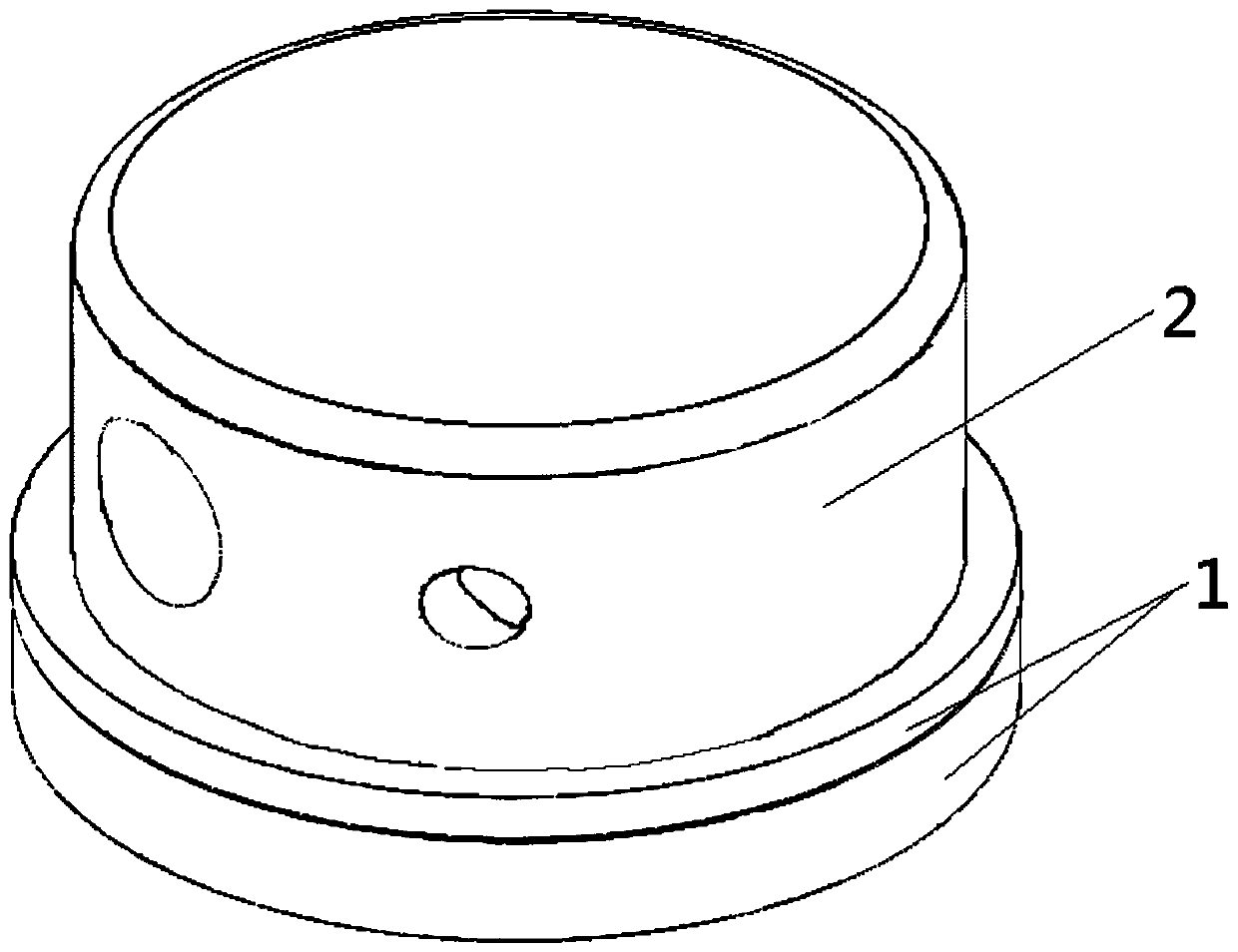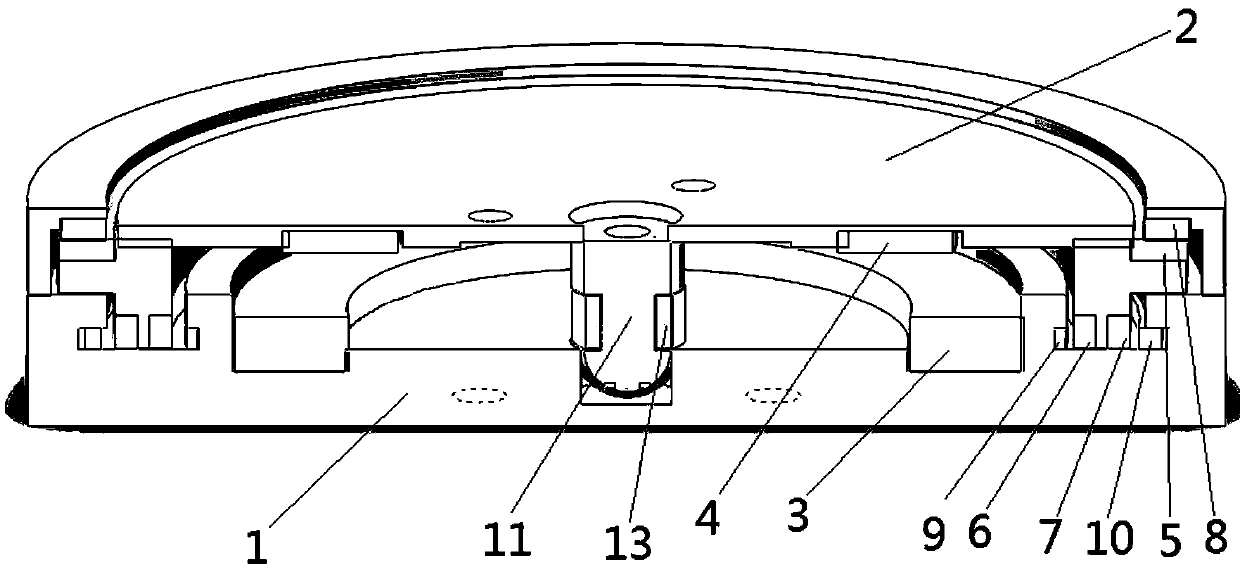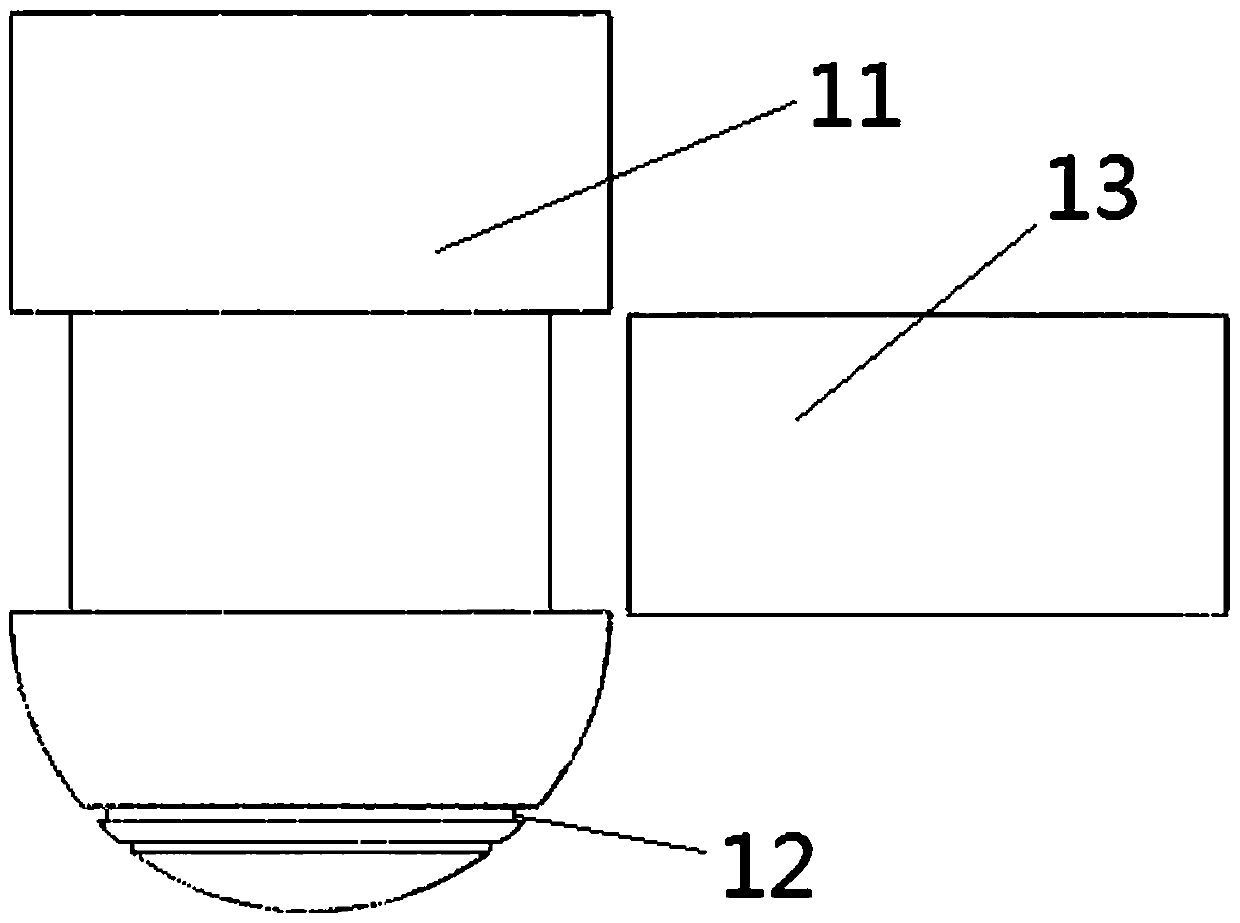Magnetic-levitation wind-driven laser scanning radar
A technology of laser scanning radar and magnetic levitation, which is applied to the re-radiation of electromagnetic waves, the use of re-radiation, and measuring devices. It can solve the problems of high noise, short service life, and high price, and achieve long life and low noise.
- Summary
- Abstract
- Description
- Claims
- Application Information
AI Technical Summary
Problems solved by technology
Method used
Image
Examples
Embodiment 1
[0026] Embodiment one: see Figure 1~Figure 4 As shown, a maglev wind-driven laser scanning radar includes an image processing system, a rotating platform 2, a fixed platform 1, a magnetic ring group and a wind-driven cooling device,
[0027] The image processing system is set in the rotating platform,
[0028] The rotating platform 2 is arranged above the fixed platform 1,
[0029] see figure 2 As shown, where the rotating platform is not completely drawn, the magnetic ring group includes a suspension system and a guiding system, and the suspension system includes a large magnetic ring 3 and a small magnetic ring 4 that are arranged up and down oppositely, wherein the large magnetic ring 3 is embedded Set on the fixed platform 1, the small magnetic ring 4 is embedded on the rotating platform 2, the large magnetic ring 3 is fixed and nested on the lower fixed platform with a large mass, and the small magnetic ring 4 is fixed and nested on the lower fixed platform with a rel...
PUM
 Login to View More
Login to View More Abstract
Description
Claims
Application Information
 Login to View More
Login to View More - R&D
- Intellectual Property
- Life Sciences
- Materials
- Tech Scout
- Unparalleled Data Quality
- Higher Quality Content
- 60% Fewer Hallucinations
Browse by: Latest US Patents, China's latest patents, Technical Efficacy Thesaurus, Application Domain, Technology Topic, Popular Technical Reports.
© 2025 PatSnap. All rights reserved.Legal|Privacy policy|Modern Slavery Act Transparency Statement|Sitemap|About US| Contact US: help@patsnap.com



